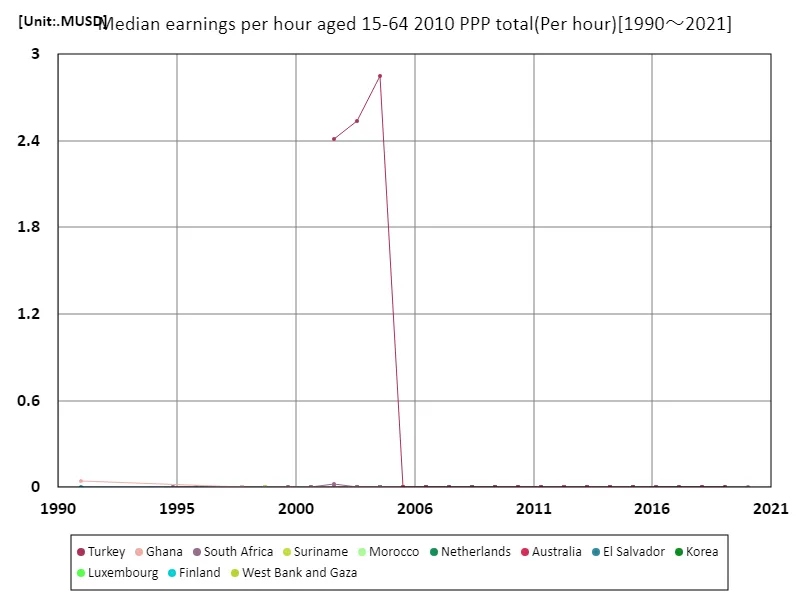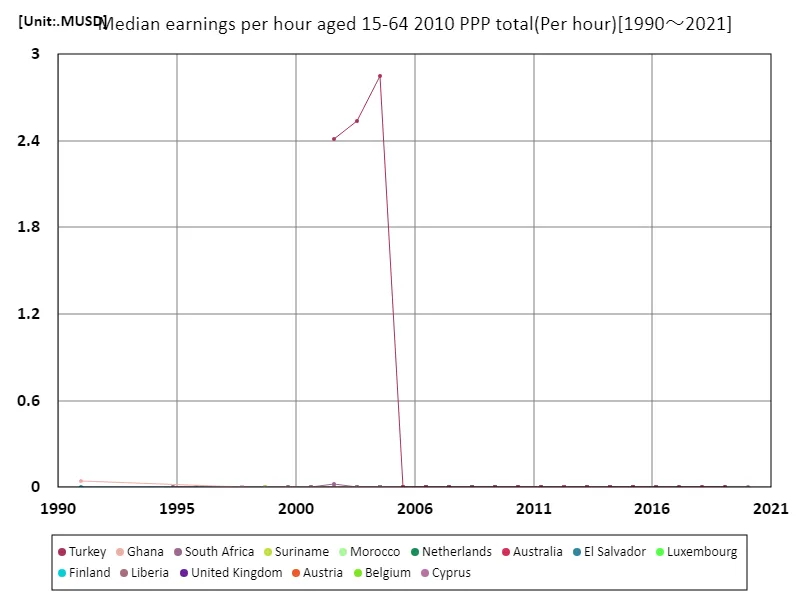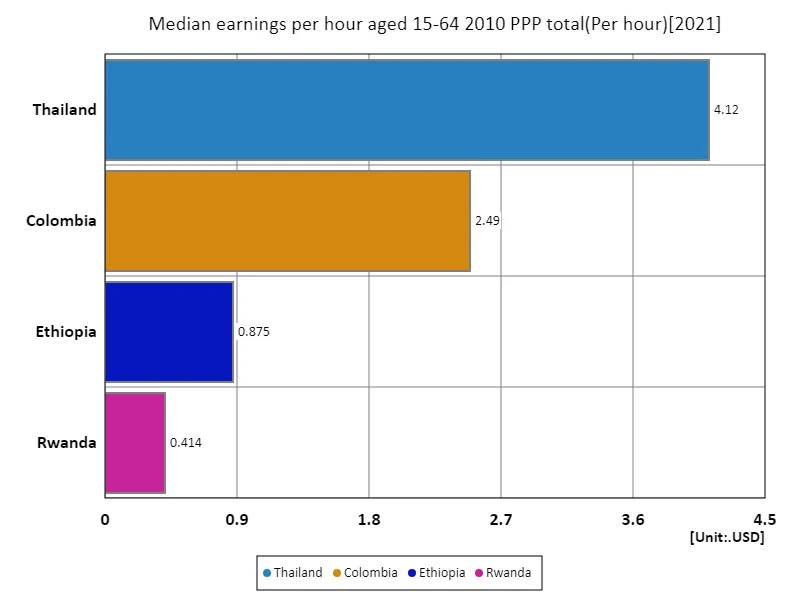Abstract
In recent years, global wage trends have shown significant disparities, with developed nations generally offering higher average hourly wages compared to developing ones. South Africa’s 2020 average hourly wage of 2.93 USD reflects a modest increase, but it still lags behind more affluent economies. Past trends highlight that wages in emerging economies often rise slowly due to factors like lower productivity, limited access to high-skill jobs, and less developed infrastructure. Meanwhile, wages in developed countries have been more stable, supported by higher productivity levels and robust labor markets.
Average hourly wage (total, 15-64 years old, 2010 purchasing power parity)
Turkey’s peak in 2004, with an average hourly wage of 2.85 MUSSD, marked a high point in its wage trajectory. Since then, Turkey’s wage levels have been around 161% of that peak, reflecting slower growth compared to other nations. This trend highlights a broader pattern where wages in many economies have stagnated or risen at a slower pace due to inflation, currency fluctuations, and economic instability. Meanwhile, some countries have seen more consistent wage growth, driven by increasing productivity and investments in higher-skilled sectors. Turkey’s wage trends reflect both domestic challenges and broader global economic shifts.


The maximum is 2.85MUSD[2004] of Turkey, and the current value is about 161μ%
Average hourly wage (total, 15-64 years old, 2010 purchasing power parity) (worldwide)
Turkey’s peak average hourly wage of 2.85 MUSSD in 2004 remains the highest recorded in the data range. Since then, Turkey’s wage has been at 161% of that peak, indicating a significant decline in wage growth relative to its past. This reflects broader challenges, including inflation, currency depreciation, and economic instability, which have limited wage growth. Globally, many economies have faced similar slowdowns, while others have experienced more robust wage increases, driven by productivity gains and technological advancements. Turkey’s trend highlights the complexities of achieving sustained wage growth amid fluctuating economic conditions.


The maximum is 2.85MUSD[2004] of Turkey, and the current value is about 161μ%
Average hourly wage (total, 15-64 years old, 2010 purchasing power parity) (worldwide, latest year)
In 2021, Thailand recorded the highest average hourly wage globally at 4.12 USD, surpassing the global average of 1.97 USD and significantly higher than the total of 7.89 USD. This wage disparity reflects the economic differences between countries, with Thailand benefiting from a mix of favorable industries and productivity improvements. However, the global average wage remains low, highlighting ongoing income inequality and slower wage growth in many regions. These trends point to a complex global labor market, where developing economies like Thailand are seeing wage increases, but challenges remain for others to catch up.


The maximum is 4.12USD of Thailand, the average is 1.97USD, and the total is 7.89USD


Comments